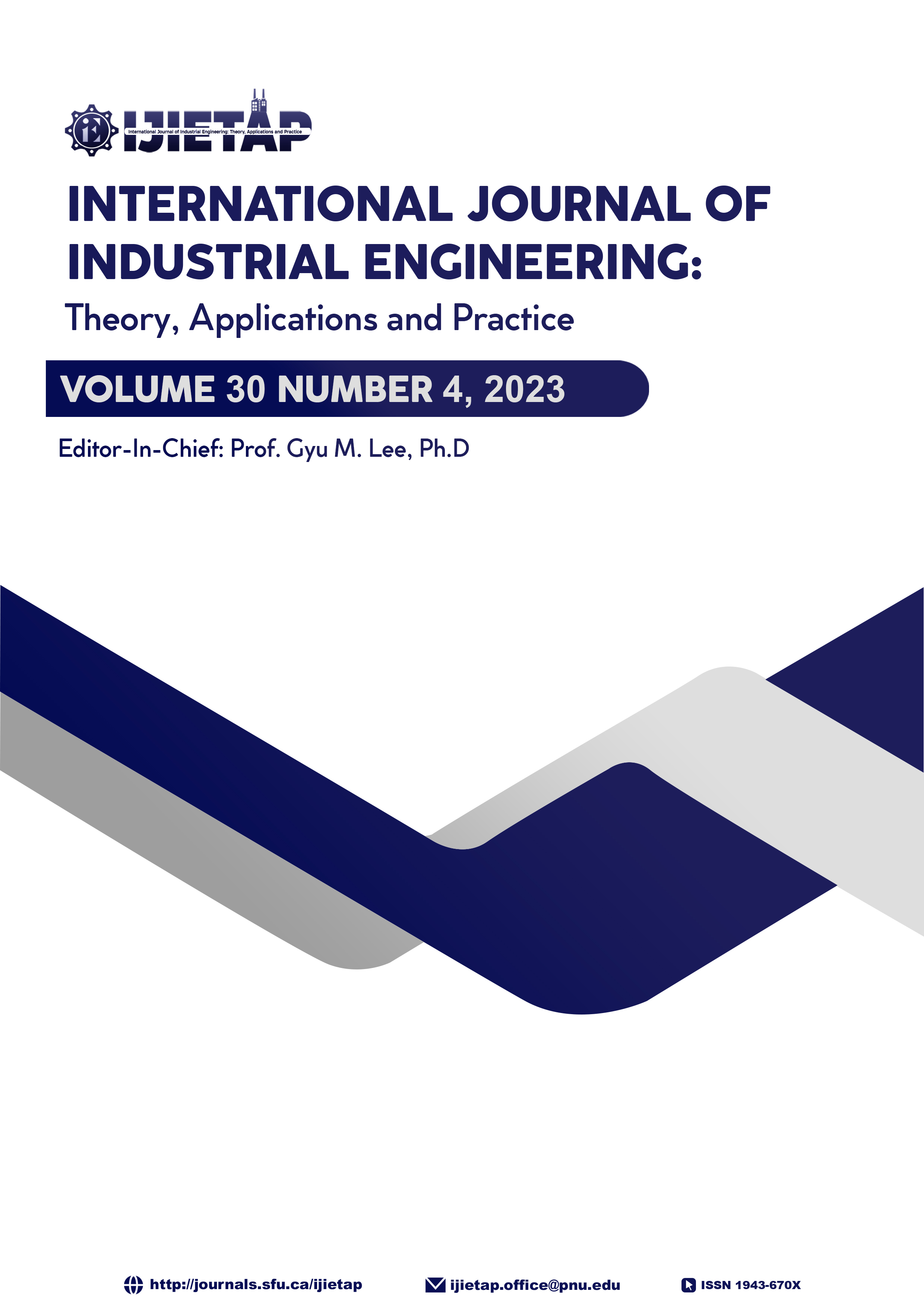DESIGN AND PERFORMANCE EVALUATION OF A NOVEL ULTRASONIC WELDING SONOTRODE FOR LANGEVIN TRANSDUCER USING FINITE ELEMENT APPROACH
DOI:
https://doi.org/10.23055/ijietap.2023.30.4.8935Keywords:
Ultrasonic welding sonotrode, Langevin transducer, Amplitude amplification, frequency response function, Finite element analysisAbstract
Ultrasonic welding (USW) is recognized as a sustainable and green manufacturing process due to its high energy efficiency, cleanliness, and excellent welding attributes. The performance of USW majorly depends on small end vibration amplitude (SEVA), achieved through a sonotrode, whose design has been the focus of many researchers. A high SEVA is essential for achieving excellent welding attributes, minimizing wastage, and ensuring a clean environment. In this study, a novel USW sonotrode was designed to enhance the output amplitude of the Langevin ultrasonic transducer (LUT). The sonotrode was evaluated for eigenfrequency characterization and harmonic excitation response through finite element analysis. The performance of this novel ultrasonic transducer was evaluated in terms of SEVA and various types of stresses at an operating frequency close to but higher than the LUT’s axial modal frequency. Variations in axial displacement and Von Mises (VM), axial, tangential, radial, principal, and shear stresses were examined along the length of the tool for titanium, aluminum, and steel sonotrodes. The SEVA of the aluminum sonotrode was 136.72% and 5.87% higher than that of the titanium and steel sonotrodes, respectively. The equivalent VM stress in the steel sonotrode was 159.2% and 379.2% greater than their aluminum and titanium counterparts. Selected cases from the present study were compared with prior research, revealing a reasonable agreement. This work provides insights into the performance of sonotrodes in USW, offering potential paths for improving the effectiveness of this sustainable manufacturing process.
Published
How to Cite
Issue
Section
License
The Author(s) must formally transfer each article's copyright before publication in the INTERNATIONAL JOURNAL OF INDUSTRIAL ENGINEERING. Such transfer enables the Journal to defend itself against plagiarism and other forms of copyright infringement. Your cooperation is appreciated.
You agree that the copyright of your article to be published in the INTERNATIONAL JOURNAL OF INDUSTRIAL ENGINEERING - THEORY, APPLICATIONS, AND PRACTICE is hereby transferred, throughout the World and for the full term and all extensions and renewals thereof, to INTERNATIONAL JOURNAL OF INDUSTRIAL ENGINEERING - THEORY, APPLICATIONS, AND PRACTICE.
The Author(s) reserve(s): (a) the trademark rights and patent rights, if any, and (b) the right to use all or part of the information contained in this article in future, non-commercial works of the Author's own, or, if the article is a "work-for-hire" and made within the scope of the Author's employment, the employer may use all or part of the information contained in this article for intra-company use, provided the usual acknowledgments are given regarding copyright notice and reference to the original publication.
The Author(s) warrant(s) that the article is Author's original work and has not been published before. If excerpts from copyrighted works are included, the Author will obtain written permission from the copyright owners and credit the article's sources.
The author also warrants that the article contains no libelous or unlawful statements and does not infringe on the rights of others. If the article was prepared jointly with other Author(s), the Author agrees to inform the co-Author(s) of the terms of the copyright transfer and to sign on their behalf; or in the case of a "work-for-hire," the employer or an authorized representative of the employer.
The journal does not provide the author copy of the final paper when it is published. The author(s) can make(s) a subscription to INTERNATIONAL JOURNAL OF INDUSTRIAL ENGINEERING - THEORY, APPLICATIONS, AND PRACTICE if they want to get the final paper that has already been published.
The journal is registered with the Library of Congress (ISSN # 1943-670X). All rights reserved. No part of this publication may be reproduced, stored in a retrieval system, or transmitted in any form or by any means, electronic, mechanical, photocopying, recording, or otherwise, without the prior written permission of the journal.
The author reserves patent and trademark rights and the right to use all or part of the information contained in the article in future non-commercial works.





